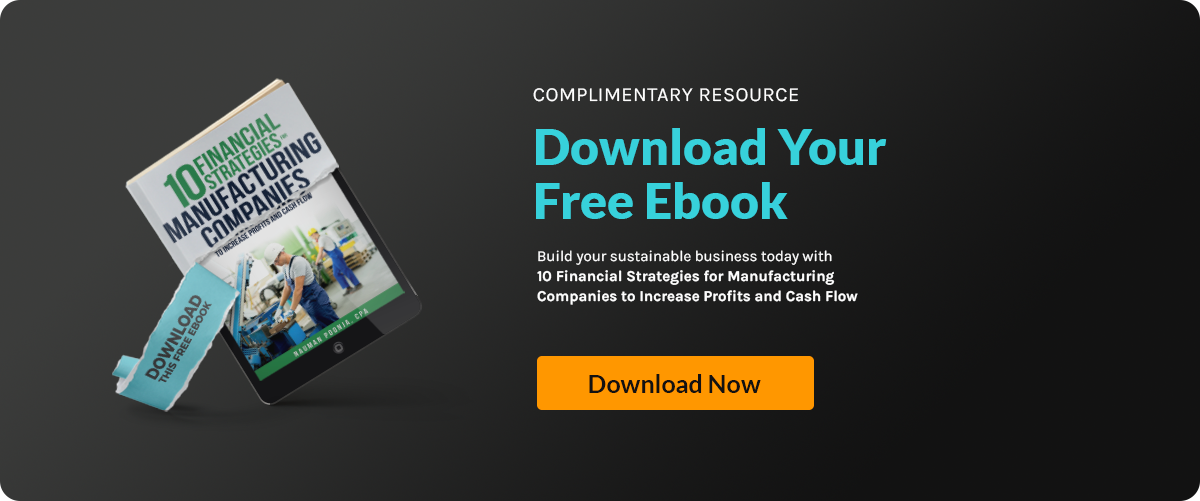How Much Does Outsourced Accounting Really Cost in 2025?

Manufacturing is all about precision—tight margins, fluctuating material costs, and constant production challenges. But even the most efficient plant can lose profit if its finances aren’t managed properly. As more manufacturers turn to outsourced accounting, one question always comes up: How much does it really cost in 2025?The answer depends on your business size, scope, and goals—but understanding what drives those costs helps you decide if outsourcing makes financial sense for your company.
Why Manufacturers Are Shifting to Outsourced Accounting
Accounting used to be an in-house function, managed by full-time bookkeepers and controllers. But today’s manufacturing operations face a different landscape—rising labor costs, complex compliance requirements, and the need for real-time financial insights.
Outsourced accounting firms now offer access to specialized teams, automation tools, and financial expertise without the overhead of hiring internally. It’s part of a larger movement that includes fractional CFOs and virtual financial controllers, roles that give smaller manufacturers enterprise-level financial visibility without the full-time price tag.
What’s Included in Outsourced Accounting Services
Before talking numbers, it’s important to know what “outsourced accounting” actually covers. Typical service bundles for manufacturers include:
- Bookkeeping and data entry
Accurate daily transaction tracking, invoice management, and reconciliation. - Accounts payable and receivable
Managing vendor payments and customer invoices using systems that follow accounts payable best practices and effective collections strategies. - Payroll processing
Timely salary calculations, tax deductions, and reporting that integrates with your HR tools. - Financial statements and reporting
Monthly profit and loss statements, balance sheets, and cash flow reports. - Budgeting and forecasting
Forward-looking plans supported by financial KPIs and dashboards. - Compliance and tax preparation
Ensuring sales and use tax filings follow standards outlined in sales and use tax in manufacturing. - Advisory and strategy
Insight into cost reduction, margin improvement, and financial risk management.
Not all firms include every service in the base fee, so pricing models vary widely.
The Pricing Models in 2025
Outsourced accounting is no longer billed strictly by the hour. Firms have shifted toward flexible, transparent pricing structures.
1. Fixed Monthly Packages
The most common model. You pay a flat fee that covers a set range of services—ideal for predictable workloads.
Average cost: $1,500–$6,000/month for small to mid-sized manufacturers.
2. Tiered Service Plans
Packages scale with company size or transaction volume. The higher the complexity, the higher the tier.
Average cost: $2,500/month (basic) to $10,000/month (comprehensive).
3. Project-Based Pricing
Short-term support for specific goals—catch-up bookkeeping, ERP migration, or implementing financial automation.
Average cost: $75–$200/hour or flat fees of $3,000–$8,000 per project.
4. Full Outsourced Finance Department
Includes bookkeeping, controller oversight, and CFO guidance—an end-to-end finance team like those managing fractional CFO engagements.
Average cost: $8,000–$20,000/month, depending on company revenue and reporting needs.
Factors That Influence Cost
Several variables determine your final price:
1. Company Size
Smaller manufacturers with limited transactions pay less than multi-plant operations processing thousands of invoices each month.
2. Complexity of Operations
Businesses that manage inventory, overseas vendors, or job-costing systems often require specialized knowledge. Outsourcing teams skilled in cost of goods sold analysis or inventory valuation methods charge more.
3. Software Integration
If your accounting platform connects with an ERP system or production software, expect a slightly higher setup fee but better efficiency over time.
4. Frequency of Reporting
Weekly reports require more labor than monthly summaries. Companies seeking real-time dashboards—similar to manufacturing metrics dashboards—pay a premium.
5. Advisory Level
Firms that include strategic forecasting, tax planning, and financial health checks in the package cost more than bookkeeping-only providers.
Cost Breakdown by Business Size
|
Manufacturer Size |
Typical Monthly Cost |
What’s Included |
|
Small (under $5M revenue) |
$1,500–$3,000 |
Bookkeeping, payroll, monthly reporting |
|
Mid-sized ($5M–$25M) |
$3,000–$7,000 |
Full accounting suite, budgeting, KPI tracking |
|
Large (over $25M) |
$7,000–$20,000 |
Controller + CFO oversight, advanced analytics |
These ranges reflect 2025 market rates for U.S. manufacturers using reputable outsourced accounting providers.
Comparing In-House vs. Outsourced Costs
Hiring in-house accountants means paying full-time salaries, benefits, and training costs. A mid-level accountant in 2025 averages $70,000–$90,000/year, while a controller costs $120,000+. Add technology licenses, audit fees, and turnover expenses, and total internal cost can easily exceed $200,000 annually.
By comparison, a skilled outsourced accounting team covers all those functions for less than half that amount—often with more advanced systems and broader manufacturing insight.
A side-by-side look:
|
Cost Category |
In-House |
Outsourced |
|
Salaries & Benefits |
$180,000+ |
Included in service fee |
|
Software & Licenses |
$5,000–$10,000 |
Usually included |
|
Training & Onboarding |
$2,000–$5,000 |
Included |
|
Turnover Risk |
High |
None |
|
Total Annual Cost |
$200K–$250K |
$40K–$100K |
Outsourcing replaces fixed costs with scalable expenses that adjust to your workload.
Hidden Savings Manufacturers Overlook
Automation Efficiency
Outsourced accounting partners often deploy advanced automation tools that improve transaction accuracy and reduce manual hours—similar to results seen in smart financial tips for high-mix low-volume production.
Eliminated Turnover
No recruiting costs, no training delays. The provider maintains continuity even when staff change.
Improved Compliance
Specialists stay updated on regulations for payroll taxes, depreciation, and sales and use tax, reducing penalties.
Better Insights
By tracking margin analysis and financial KPIs, outsourced teams identify waste faster, helping you reinvest savings into production upgrades.
Real-World Example
A precision parts manufacturer in Washington moved from a small in-house team to an outsourced accounting provider. Within three months, transaction errors dropped by 30%, and they gained real-time visibility into material costs. Their monthly spend was $4,800—less than half of what their internal payroll had cost.
With better cash flow visibility and streamlined reporting, leadership could finally focus on production efficiency rather than paperwork.
When Outsourcing Might Not Be Right
Outsourced accounting isn’t perfect for everyone. Large manufacturers with complex subsidiaries or international tax exposure might still prefer in-house teams for control and immediacy. If you operate multiple plants or run highly customized ERP systems, the onboarding process may take longer.
However, even these companies often outsource specialized functions—like tax credits, R&D incentives, or financial audits—to cut down on overhead.
What To Expect During Onboarding
- Assessment Phase – Review your current books, processes, and technology.
- Implementation Phase – Integrate accounting platforms and migrate data.
- Stabilization Phase – Begin producing accurate financial reports.
- Optimization Phase – Add forecasting, budget planning, and KPI dashboards.
Most manufacturers see measurable ROI within three to six months.
2025 Cost Trends to Watch
- AI-Driven Accounting: Expect more automation tools that lower manual labor costs.
- Industry-Specific Packages: Providers now tailor offerings for manufacturers—tracking cost-volume-profit analysis and production KPIs.
- Transparent Pricing: Fixed monthly rates are replacing hourly billing.
- Integrated Services: Bundled controller and CFO oversight is becoming standard for mid-sized operations.
These trends push the average cost of outsourced accounting downward while quality rises.
The True Value Behind the Cost
When manufacturers ask, “How much does outsourced accounting cost?” the better question is, “What do I get for that investment?”
You’re not just paying for bookkeeping—you’re buying peace of mind, accuracy, and scalability. A good outsourced firm gives you access to top-tier accountants, up-to-date compliance knowledge, and automated reporting pipelines that deliver insights fast.
That’s how modern manufacturers maintain control over their financial future while keeping costs predictable.
The Bottom Line
In 2025, most small and mid-sized manufacturers will spend $2,000–$7,000 per month on outsourced accounting. The exact number depends on your complexity, volume, and need for strategic support—but almost every manufacturer gains measurable savings compared to full-time hiring.
When you compare the total cost, risk, and flexibility, outsourcing continues to prove its worth. It keeps your finance department lean, automated, and aligned with your production goals—helping you focus on what you do best: building great products.







